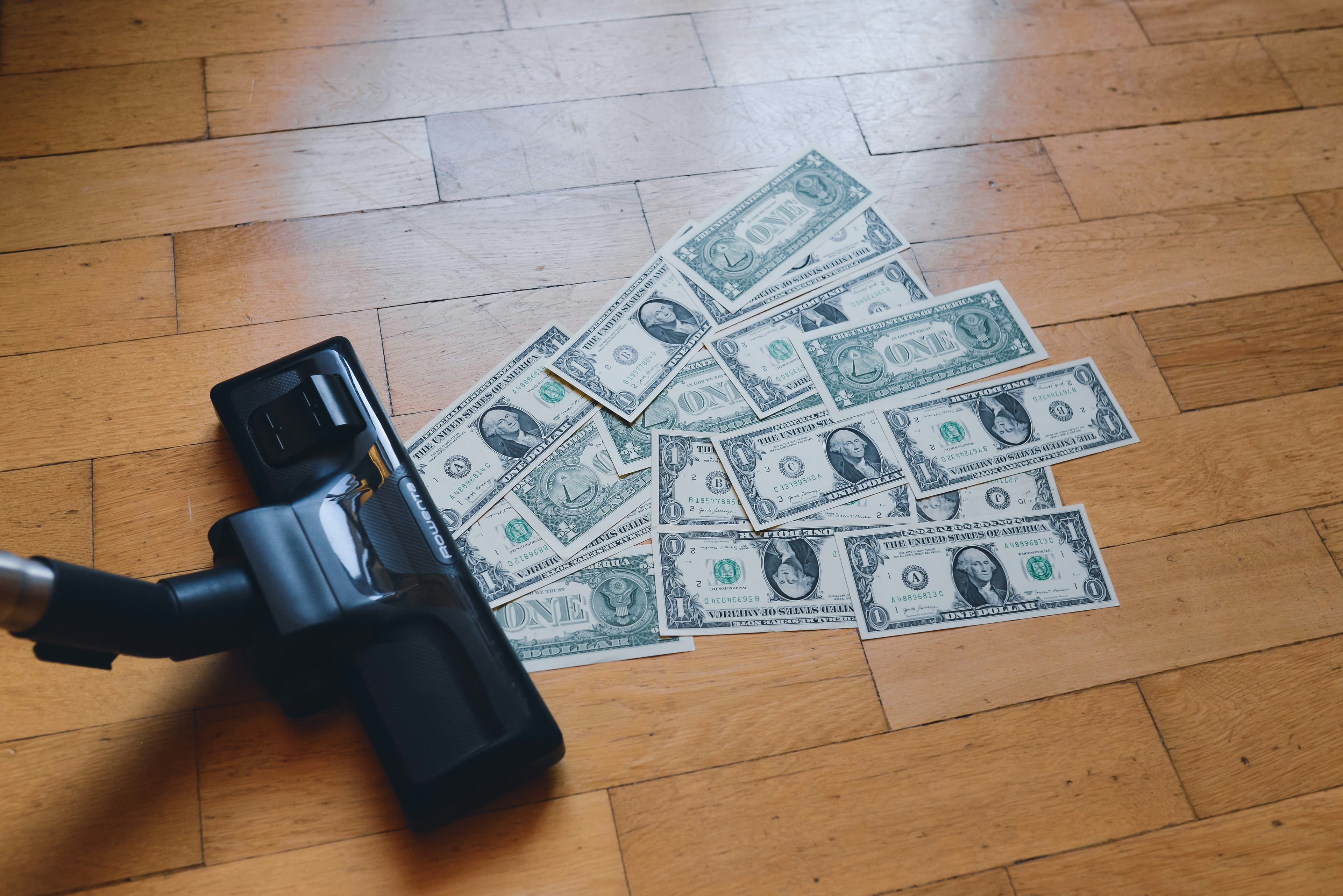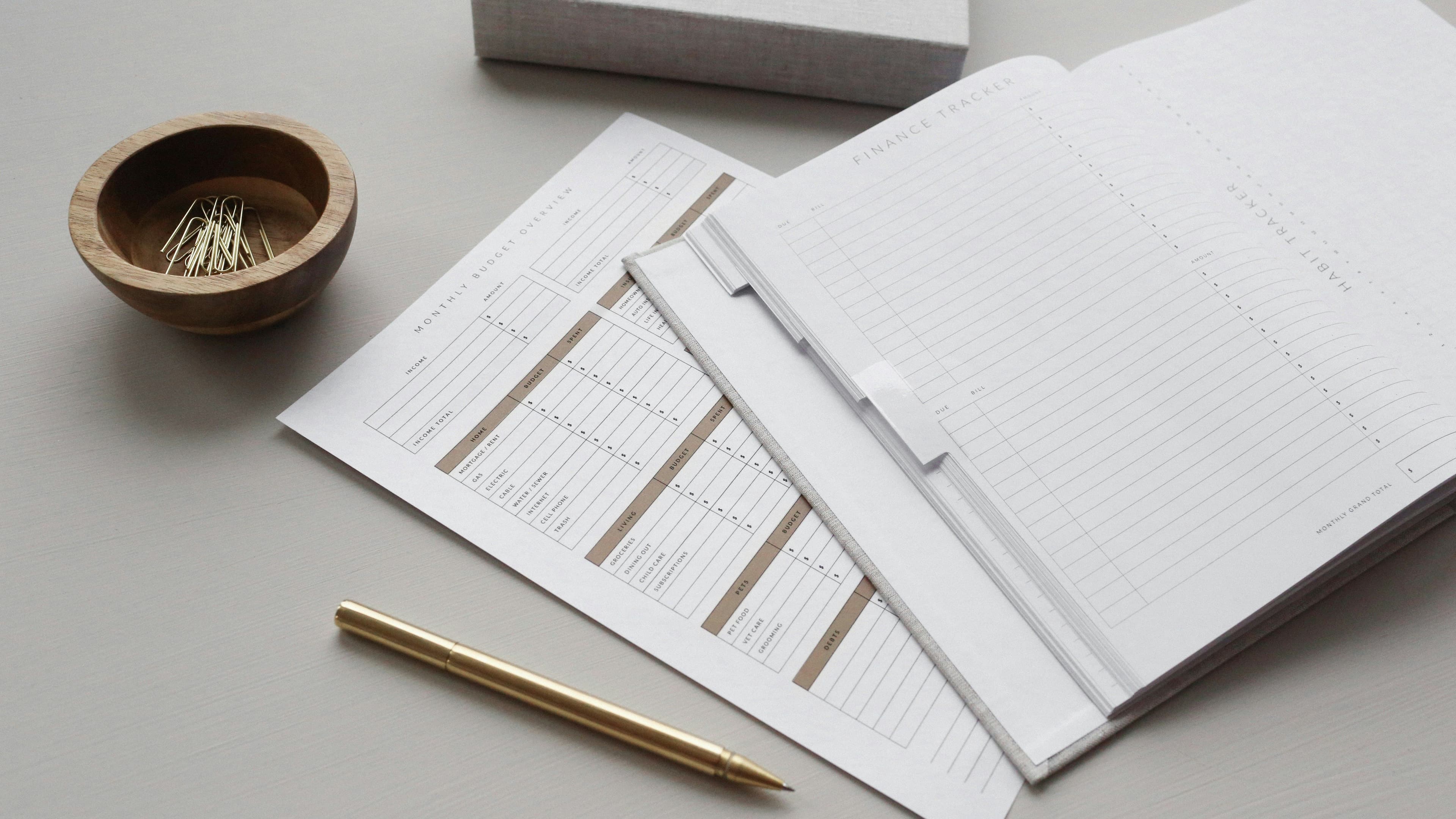Money Management for Freelancers: Irregular Income Guide
Master freelancer money management with proven strategies for irregular income. Real tips from someone who went from feast-or-famine to stability.

So last April, I had my best freelance month ever and made $8,347 doing marketing work for a bunch of different clients. I was on top of the world, man. Finally felt like I'd figured this whole freelance thing out. Paid off my credit card, bought some new clothes, and took my wife out for nice dinners. I'm thinking to myself, "If I can just keep this momentum going, I'll be making serious money."
Then May rolls around. Guess how much I made?
Two hundred and forty-seven dollars.
That's it. For the entire freaking month.
I'm sitting there at the end of May, staring at my pathetic bank balance, trying to figure out how the hell I went from feeling like a successful entrepreneur to wondering if I could cover rent. And that's when it hit me: I'd been treating my freelance income like I had a regular job. Which is totally nuts when you think about it.
All that budgeting advice you read online? It's written for people with steady paychecks. "Create a monthly budget!" Okay, but based on what income exactly the good month or the disaster month?
After that humbling reality check, I spent the next eight months figuring out how to handle money when your income bounces around like a ping-pong ball. Took a lot of trial and error, but I finally found a system that works whether I'm having an amazing month or a terrible one.
Why Normal Money Advice is Useless for Freelancers
Every single piece of financial advice I'd ever read felt like a slap in the face when I was dealing with income that changed completely from month to month. "Save twenty percent of your income!" Twenty percent of which income? The month I made eight grand or the month I made basically nothing?
"Pay yourself first!" Great idea, but what if there's nothing left to pay myself with?
Here's why regular budgeting advice is completely worthless for freelancers:
It assumes you know what you'll make each month. Traditional budgets are built around the idea that you get a paycheck for roughly the same amount every two weeks. Freelancers might land a huge project one month and then have zero work lined up for the next two months.
It treats irregular income like you're doing something wrong. All the advice basically says "just get more consistent clients" or "build recurring revenue streams." Thanks for that groundbreaking insight why didn't I think of just making the same amount every month?
It doesn't account for the emotional roller coaster. When you've been broke for three weeks and suddenly get a $4,000 payment, your brain goes into "spend it before it disappears" mode. Regular budgeting advice doesn't deal with this psychological reality.
It ignores the fact that clients pay on their own timeline. You can finish a project in January, send the invoice in February, and finally get paid in April. Meanwhile, your landlord still expects rent on the first of every month.
I tried using this fancy budgeting app once. It kept asking me to set up "income categories" and plan my spending around my "monthly salary." I'm looking at my income history—$2,100, $6,800, $890, $4,200, $312 – thinking, "What monthly salary are we talking about here?"
The app suggested I calculate my average monthly income and budget around that. So I did the math and came up with an average of about $3,500 per month. Sounds reasonable, right? Except I had no clue which months would be above or below that average, making the whole thing pointless.
That's when I realized freelancers need a totally different approach. Not some fancy wealth-building strategy, but a "how do I survive this chaos" strategy.

The System That Saved My Sanity
After my May disaster, I had to completely rethink how I handled money. I came up with what I call my "artificial paycheck" system. Instead of trying to budget around crazy income swings, I learned to create fake stability.
Figure Out What You Actually Make
First thing I did was get brutally honest about my real income. Not what I hoped to make or what I made during my best month, but what I actually averaged over time.
I pulled up a year's worth of freelance income:
- January: $3,200
- February: $1,890
- March: $4,100
- April: $8,347
- May: $247
- June: $2,650
- July: $5,200
- August: $1,400
- September: $3,800
- October: $6,100
- November: $2,200
- December: $940
Total for the year: $40,074 Monthly average: $3,339
So I decided to pay myself exactly $3,300 every month, no matter what I actually earned. Some months I'd make way more, some months way less, but I'd always pay myself the same amount.
The "Extra Money" Account
Here's how this actually worked:
Good months: When I made more than $3,300, the extra went straight into a separate savings account. So that crazy $8,347 April? I paid myself my usual $3,300 and stuck $5,047 into what I called my "overflow account."
Crappy months: When I made less than $3,300, I'd pull the difference from the overflow account. During that awful May when I only made $247, I grabbed $3,053 from overflow to pay myself my full "salary."
Normal months: When I made close to $3,300, I'd just pay myself and not worry about it.
This created fake income stability that let me budget like a normal person, even though my actual earnings were all over the map.
Worth Exploring:
- From Panicking About Bills to Making $7K Every Month
- The 10 Most Profitable Printable Types for Etsy Sellers
Building That First Buffer
The tricky part was building up that overflow account when you're starting from zero. You can't smooth out income you don't have saved yet.
I had to be really disciplined during my first few good months. No celebrating, no "I deserve this" purchases, no treating myself. When I had a $6,000 month, I lived like I'd made $3,300 and saved every extra penny.
Took about four months of being super strict during good months to build enough buffer to survive the inevitable bad months. But once I had that cushion, the stress basically disappeared.
Planning for Predictable Patterns
After tracking income for over a year, I started noticing patterns. November and December always sucked (clients tightening budgets for the holidays). January was usually pretty good (new year, new projects). Summer was hit-or-miss but generally okay.
So I started planning around these patterns:
- Good months: Save extra aggressively to prepare for the slow periods I knew were coming.
- Slow seasons: Pull from overflow without freaking out because I'd planned for this.
- In-between times: Focus on finding new work during the predictably slow periods.
Knowing these patterns helped me stop panicking every time December rolled around and work dried up.
Tracking Future Money
I also started keeping track of not just current income but work that was coming down the pipeline:
- Signed contracts: Projects with confirmed start dates
- Likely projects: Proposals I'd sent where the client seemed interested
- Maybe projects: Conversations that might turn into work
This pipeline view helped me plan a few months ahead instead of just reacting to whatever money showed up in my account.

💡 50 Digital Side Hustle Ideas
Get your free guide packed with 50+ profitable digital side hustle ideas you can start today — even if you're a complete beginner!
We respect your privacy. Unsubscribe at any time.
Dealing With Clients Who Pay Whenever They Feel Like It
One of the biggest headaches isn't just how much you make; it's when you actually get paid. You can finish work in January and not see money until March, but your bills don't wait for your clients to get their act together.
The Whole Payment Dance
I had to learn to track the entire payment process for each client:
- Finish the work: When I actually deliver what they asked for.
- Send the invoice: When I get around to billing them (sometimes I am slow on this).
- Client processes payment: How long each client actually takes to pay, regardless of what their "terms" say.
- Money hits my account: When I can actually spend it.
Some clients paid within a few days. Others took two months even though they claimed "Net 30" terms. I started planning around the slowest payers, not the stated terms.
Weekly Money Check-Ins
Monthly budgeting was useless, but checking my cash situation weekly was a game-changer. Every Sunday I'd look at:
- How much money I actually have right now
- What bills were due this week?
- What payments I expected to receive this week
- Whether I needed to pull from my overflow account
This kept me from spending money on Monday that I needed for rent on Friday.
Getting Paid Faster
I started being way more aggressive about getting paid quickly:
Money upfront: I began asking for 25-50% payment before starting bigger projects. This helped cash flow and meant I wouldn't do a bunch of work for free if the client turned out to be sketchy.
Smaller payments more often: Instead of one big payment at the end, I'd break projects into pieces with payments at each stage.
Actually talking about payment timing: I started asking during initial conversations how long their payment process actually took, instead of assuming their stated terms meant anything.
Following up faster: I set reminders to bug clients about overdue invoices instead of just hoping they'd remember to pay me.
My Late Payment Plan
I also figured out exactly what to do when clients were late on big payments:
Day 5: Friendly email asking if they got my invoice Day 15: Phone call asking when I could expect payment Day 30: More serious email about late fees Day 45: Stop any current work until I get paid.
Having this plan took the emotion out of chasing money people owed me.
The Mental Game of Feast or Famine
The hardest part about irregular income isn't the logistics; it's the mental stuff. When you've been struggling for weeks and suddenly get a huge payment, every instinct tells you to blow it immediately before it disappears.
Why We Go Crazy During Good Months
I used to treat big payments like they were lottery winnings instead of regular income that needed to last. Made $6,000 this month? Time to catch up on everything I couldn't afford when things were slow. New clothes, nice dinners, that expensive software I'd been wanting basically acting like every good month was bonus money.
The problem is your brain sees irregular high income as "extra money" instead of "money that needs to cover future bills." It's not logical, but the feeling is incredibly strong.
Staying Disciplined When Money Comes In
The artificial paycheck system helped because I literally couldn't access the extra money during good months. It went straight into my overflow account that I didn't touch for regular spending.
But I still had to train my brain not to go nuts:
Celebrating without spending: I started celebrating good months with free stuff, taking a day off, going hiking, and calling friends to share good news. I'd acknowledge the win without blowing the money.
Remembering bad times: I kept a note on my phone about exactly how broke and stressed I felt during my worst month. When I wanted to overspend during good months, I'd read that note.
Making it automatic: I set up transfers so extra money disappeared before I could spend it. Can't blow money you can't easily get to.
Worth Exploring:
Not Panicking During Slow Periods
The flip side was learning to chill out when work disappeared. I used to freak out and make stupid decisions, taking crappy low-paying projects, saying yes to nightmare clients, and spending all my energy worrying instead of finding new work.
The overflow account helped because I knew I could survive several slow months without changing anything. But I also had to develop better mental habits:
Using slow time productively: Instead of just worrying, I'd spend more time on marketing, networking, and learning new skills.
Tracking the right stuff: Instead of obsessing over my bank balance, I'd track how many proposals I'd sent, how many people I'd talked to, and how many potential clients I was working on.
Remembering it's temporary: I kept notes about all my previous slow periods and how they ended. This helped me remember that feast-or-famine is a cycle, not permanent.
Thinking Longer-Term
The biggest mental shift was learning to think about money over longer periods instead of month by month. Instead of "I made $4,000 this month, so I can afford this," I started thinking, "I want to make $45,000 this year, which means averaging $3,750 per month."
This longer view made it easier to save during good months and spend reasonably during bad months.

Getting Smarter About Freelancer Money
Once I had the basic artificial paycheck thing working, I started getting more sophisticated about creating stability and growing income.
Multiple Income Streams
Depending entirely on project work was like putting all my eggs in one really unstable basket. I started developing different types of income:
Monthly retainer clients: Instead of getting paid $2,000 once for a project, I'd try to get $500 per month for four months of ongoing work.
Some passive income: I created a few digital products that could bring in small amounts without ongoing work. Not life-changing money, but maybe $200-500 per month of predictable income.
Part-time steady work: I picked up one part-time gig that paid $800 monthly no matter what. This covered basic expenses and made freelance income less critical.
Different types of projects: Instead of just doing one thing, I learned related skills so I could take different kinds of work when my main area was slow.
Worth Exploring:
Retainers vs One-Time Projects
I figured out that how clients paid me was almost as important as how much they paid. Retainer deals created way more predictable cash flow.
Monthly retainers: $1,500 per month for ongoing work beats getting $4,500 for a one-time project, even if the project paid more per hour.
Quarterly payments: Some clients liked paying every three months for ongoing work, which gave me bigger but still predictable payments.
Project payments spread out: For big projects, I'd negotiate payments throughout instead of waiting until the end.
Planning Around Seasons
After two years of tracking patterns, I started building my whole business around predictable seasonal changes:
End of year: November and December were always slow, so I'd plan lighter workloads and focus on setting up next year.
Beginning of year: January through March were usually good for new projects, so I'd focus on delivery and taking on as much good work as possible.
Summer: June through August was unpredictable, so I'd keep steady workflows while preparing for fall business development.
Investing With Irregular Income
Regular investment advice assumes you can put away the same amount every month. With crazy income, I had to do things differently:
Good month investing: During months when I made way more than my target, I'd invest some of the excess instead of just saving it all.
Flexible contributions: Instead of investing the same amount monthly, I'd put in more during good months and skip during slow periods.
Bigger emergency fund: I kept more cash saved than normal advice suggests because my income was less predictable.
Tax-advantaged accounts: I'd max out my SEP-IRA during good years and contribute less during slower years.
Apps and Tools That Don't Suck
After trying tons of different apps and systems, here's what actually made my life easier instead of more complicated.
Bank Account Setup
Four separate accounts: I set up multiple accounts to automate my artificial paycheck system:
- Business checking (where client money comes in)
- Overflow savings (for extra money during good months)
- Personal checking (where I pay myself)
- Tax savings (for quarterly payments)
Automatic transfers: Money moved between accounts based on rules I set up, so I didn't have to remember or make emotional decisions about saving.
Business credit card: I used a separate card for all freelance expenses to keep business and personal stuff completely separate.
Income and Expense Tracking
FreshBooks: This handled all my invoicing and payment tracking. The automatic reminders for late payments were worth the cost by themselves.
YNAB: Once I had steady artificial income, this helped me budget like a normal person.
Toggl: I tracked time on projects to figure out my real hourly rates and which work was most profitable.
Simple spreadsheet: I kept a basic spreadsheet tracking monthly income and patterns. Sometimes simple is better than fancy.
Tax Stuff
Saving 30% automatically: I put away 30% of every payment for taxes. Probably more than I needed, but I'd rather get a refund than owe money.
TurboTax Self-Employed: Handled all the freelancer tax forms and deductions without me having to figure it out.
Expense photos: I took pictures of every business receipt throughout the year instead of trying to remember everything later.
Quarterly payment reminders: Calendar alerts so I never missed estimated tax deadlines.
Worth Exploring:
Emergency Fund Planning
Regular emergency fund advice (3-6 months of expenses) didn't work with irregular income. I had to plan more carefully:
Minimum expense calculation: I figured out my absolute rock-bottom monthly expenses.
Worst-case scenario planning: I looked at my lowest 3-month income period and planned for that happening again.
Client risk assessment: Since some income came from big clients, I planned for losing my biggest income source.
Seasonal adjustments: I kept more cash during predictably slow times and less during strong seasons.
Worth Exploring:
Your Three-Month Plan to Stop Panicking About Money
Getting freelance finances under control takes time, but you can make real progress in three months if you're consistent.
Month 1: Figure Out What's Actually Happening
Weeks 1-2: Look at your real income.
- Dig up 6-12 months of income data if you have it.
- Calculate what you actually average per month.
- Find your best and worst months.
- Look for any seasonal patterns.
Weeks 3-4: Track your spending.
- Write down every expense for two weeks.
- Figure out your absolute minimum monthly costs.
- See where you overspend during good months.
- Set up basic expense tracking.
Goal for month 1: Understand your real patterns without trying to change anything yet.
Month 2: Set Up Your Systems
Weeks 5-6: Bank account setup
- Open your overflow savings account.
- Set up automatic tax savings.
- Completely separate business and personal money.
- Pick an invoicing system and start using it.
Weeks 7-8: Start artificial paychecks
- Figure out your target monthly "salary."
- Begin paying yourself the same amount regardless of what you actually make.
- Start building your overflow account during good weeks.
- Switch to weekly money check-ins.
Goal for month 2: Have basic systems working and start building financial buffers.
Month 3: Optimize and Plan Ahead
Weeks 9-10: Speed up client payments
- Try to get faster payment terms with current clients.
- Start asking for money upfront on new projects.
- Set up systems for chasing late payments.
- See if you can convert any clients to retainers.
Weeks 11-12: Build for the future
- Look for ways to create more consistent income.
- Develop skills that could lead to retainer work.
- Start building a pipeline of future projects.
- Plan for seasonal changes you've noticed.
Goal for month 3: Fine-tune systems and plan for long-term stability.
Daily Stuff That Helps
Morning routine (10 minutes):
- Check the business account balance.
- See what payments are coming this week.
- Plan business development for the day.
Evening routine (15 minutes):
- Track any business expenses.
- Update the project pipeline.
- Plan tomorrow based on the current money situation.
Weekly Check-Ins
Every Sunday (30 minutes):
- Look at cash flow for the week ahead.
- Follow up on any late payments.
- Plan business development during slow periods.
- Adjust spending based on current account balances.
What Success Looks Like After 90 Days
Month 1 success: You know your real income patterns and spending habits.
Month 2 success: Basic systems are working, and you have some buffer money.
Month 3 success: You're paying yourself consistently and have future work lined up.
Signs you're ready for advanced stuff:
- You can pay yourself the same amount for 2+ months straight.
- You have at least $1,000 in your overflow account.
- You're tracking income and expenses systematically.
- You have some predictable income developing.
Mistakes That'll Set You Back
Don't try to do everything at once. Start with tracking and basic systems before getting fancy.
Don't set your "salary" too high initially. Better to start conservative and increase later.
Don't skip tax savings. Nothing ruins freelance finances like owing thousands you didn't plan for.
Don't abandon the system during good months. The urge to overspend when money comes in is strong, but consistency matters more.
When to Get Professional Help
Talk to an accountant if:
- You're making over $50K annually freelancing.
- You have complicated expenses or multiple income types.
- You're confused about quarterly tax stuff.
- You want to optimize your business setup for taxes.
Consider financial coaching if:
- You're struggling with the emotional side of irregular income.
- You want help setting long-term financial goals.
- You need someone to keep you accountable.
- You're ready to move beyond just surviving to actually building wealth.
Bottom Line
Managing money as a freelancer doesn't have to be a constant source of stress. Yeah, irregular income creates challenges that regular budgeting advice doesn't address. But with the right systems, you can create stability even when your income bounces around like crazy.
The key is accepting that freelancer finances work differently and building systems that work with irregular income instead of fighting it. Artificial paychecks, overflow accounts, and weekly cash flow planning aren't rocket science, but they can completely change your relationship with money.
I went from that terrible $247 month and all the panic that came with it to having months of expenses saved and feeling confident about money. Didn't happen overnight, and I had to change both my systems and how I thought about money.
Your freelance income might never be perfectly predictable, but your financial stress can be way more manageable. Start with tracking what you actually make and spend, then build systems that create fake stability. Focus on making progress, not being perfect.
The freelance life offers amazing freedom, but only if you can handle the financial uncertainty. These systems give you that stability so you can focus on building your business instead of constantly worrying about money.
Your freelance financial stability starts with whatever you do next. Make it count.
About The Author

SEO consultant
Austin, USA
Maya Rodriguez is an SEO consultant and digital marketing strategist with over 12 years of experience helping businesses improve their online visibility and organic traffic. Based in Austin, Texas, she's worked with over 50 clients ranging from local startups to Fortune 500 companies, achieving an average organic traffic increase of 180% across her client portfolio... Full bio
You might also like




